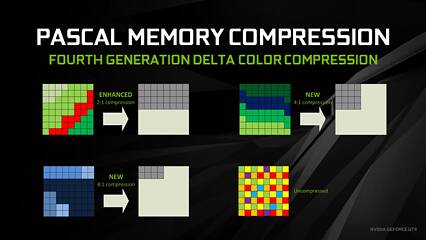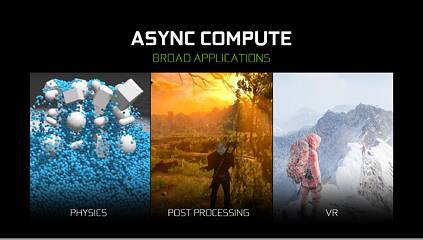 156
156
NVIDIA GeForce GTX 1060 6 GB Review
(156 Comments) »Introduction

NVIDIA today announced the GeForce GTX 1060, its third consumer graphics card based on the "Pascal" architecture, which we are reviewing today. We absolutely love the GeForce GTX 1080 and GTX 1070 this architecture debuted with, but those SKUs are pricier than expected, especially with custom-design cards using the costlier "Founders Edition" pricing instead of NVIDIA's MSRP for those SKUs as a baseline. This is a problem as NVIDIA had nothing new below the $380 mark.
AMD recently launched the Radeon RX 480 priced at $229. It offers performance at least on par with $350 SKUs from the previous generation, presenting an attractive option for people still gaming on 1080p or even 1440p with moderate details. This caused NVIDIA to accelerate the launch of its GeForce GTX 1060 graphics card from its rumored Fall 2016 launch.
NVIDIA is pricing the GeForce GTX 1060 at a surprising $249 price point, which is just $20 more than the Radeon RX 480 8 GB. Its Founders Edition reference-design SKU, which we are reviewing today, is priced at a $50 premium, at $299. We hope custom-design boards orbit at around the $249 MSRP and not the $299 GTX 1060 Founders Edition price, although we expect them to start somewhere between those two price points instead.

The GeForce GTX 1060 is based on the third ASIC derived from the "Pascal" architecture, the GP106. Built on the 16 nm FinFET process, this chip features 4.4 billion transistors and a die area of just 200 mm². It features exactly half as many shaders as the GP104, although its memory interface is just 33% narrower. The card draws power from a single 6-pin PCIe power connector and its TDP is rated at just 120W.
The GTX 1060 is endowed with 1,280 CUDA cores spread across ten streaming multiprocessors, 80 TMUs, 48 ROPs, and a 192-bit wide GDDR5 memory interface, holding 6 GB of memory. The core is clocked at 1506 MHz, with a GPU Boost frequency of 1709 MHz, and the memory runs at 8 Gbps, belting out 192 GB/s of memory bandwidth.
NVIDIA is claiming performance figures for the GeForce GTX 1060 that match the GeForce GTX 980 from the previous generation. This is interesting because the GTX 980 not only plays everything at 1080p, but is also very capable at 1440p. In a way, NVIDIA is bringing high-detail 1440p gaming to the masses.
| GeForce GTX 960 | Radeon R9 380X | Radeon R9 390 | GeForce GTX 970 | Radeon RX 480 | Radeon R9 390X | GeForce GTX 780 Ti | GeForce GTX 980 | GeForce GTX 1060 | Radeon R9 Fury | Radeon R9 Fury X | GeForce GTX 980 Ti | GeForce GTX Titan X | GeForce GTX 1070 | |
|---|---|---|---|---|---|---|---|---|---|---|---|---|---|---|
| Shader Units | 1024 | 2048 | 2560 | 1664 | 2304 | 2816 | 2880 | 2048 | 1280 | 3584 | 4096 | 2816 | 3072 | 1920 |
| ROPs | 32 | 32 | 64 | 56 | 32 | 64 | 48 | 64 | 48 | 64 | 64 | 96 | 96 | 64 |
| Graphics Processor | GM206 | Tonga | Hawaii | GM204 | Ellesmere | Hawaii | GK110 | GM204 | GP106 | Fiji | Fiji | GM200 | GM200 | GP104 |
| Transistors | 2940M | unknown | 6200M | 5200M | 5700M | 6200M | 7100M | 5200M | 4400M | 8900M | 8900M | 8000M | 8000M | 7200M |
| Memory Size | 2 GB | 4 GB | 8 GB | 4 GB | 4 GB / 8 GB | 8 GB | 3 GB | 4 GB | 6 GB | 4 GB | 4 GB | 6 GB | 12 GB | 8 GB |
| Memory Bus Width | 128 bit | 256 bit | 512 bit | 256 bit | 256 bit | 512 bit | 384 bit | 256 bit | 192 bit | 4096 bit | 4096 bit | 384 bit | 384 bit | 256 bit |
| Core Clock | 1127 MHz+ | 970 MHz | 1000 MHz | 1051 MHz+ | 1120 - 1266 MHz | 1050 MHz | 876 MHz+ | 1126 MHz+ | 1506 MHz+ | 1000 MHz | 1050 MHz | 1000 MHz+ | 1000 MHz+ | 1506 MHz+ |
| Memory Clock | 1753 MHz | 1425 MHz | 1500 MHz | 1750 MHz | 2000 MHz | 1500 MHz | 1750 MHz | 1750 MHz | 2002 MHz | 500 MHz | 500 MHz | 1750 MHz | 1750 MHz | 2002 MHz |
| Price | $170 | $210 | $260 | $265 | $199 / $229 | $310 | $390 | $360 | $249 / $299 | $530 | $600 | $440 | $1150 | $379 / $449 |
Architecture
The GeForce GTX 1060 succeeds the GeForce GTX 960 of the previous generation, and is hence based on a smaller ASIC, the GP106, which in turn succeeds the GM206 silicon the GTX 960 is based on. Leveraging the 16 nm FinFET process, the GP106 is tiny, with a die-area of just 200 mm². The transistor count is 4.4 billion, which is a significant increase from the 2.94 billion on the GM206.With each successive architecture since "Fermi," NVIDIA has been enriching the streaming multiprocessor (SM) by adding more dedicated resources and reducing shared resources within the graphics processing cluster (GPC), which leads to big performance gains. The story continues with "Pascal." Like the GM206 before it, the GP106 features two GPCs, super-specialized subunits of the GPU that share the PCI-Express 3.0 x16 host interface and the 192-bit GDDR5 memory interface through six controllers.
Workload across the two GPCs is shared by the GigaThread Engine cushioned by an L2 cache. Each GPC holds five streaming multiprocessors (SMs), which is an increase from the four SMs each GPC held on the GM206. The GPC shares a raster engine between these five SMs. The "Pascal" streaming multiprocessor features a 4th generation PolyMorph Engine, a component for key render setup operations. With "Pascal," the PolyMorph Engine includes specialized hardware for the new Simultaneous MultiProjection feature. Each SM also holds a block of eight TMUs.
Each SM continues to feature 128 CUDA cores. The GP106 hence features a total of 1,280 CUDA cores. Other vital specifications include 80 TMUs and 48 ROPs. You'll notice that while the SIMD components are half that of the GP104, the GP106 features 75% of the GP104's raster operations machinery and memory interface. 6 GB is the standard memory amount, a three-fold increase from the GTX 960 (which launched with 2 GB as a standard memory amount as 4 GB variants were added by board partners much later).
The GeForce GTX 1060 features 8 Gbps GDDR5 memory. Across a 192-bit memory interface, you're looking at a memory bandwidth of 192 GB/s. NVIDIA has improved the delta color compression technology with the "Pascal" architecture, and in the best-case scenario, this should provide a memory bandwidth utilization uplift of 20 percent (effectively 230.4 GB/s).
The "Pascal" architecture supports Asynchronous Compute as standardized by Microsoft. It adds to that with its own variation of the concept with "Dynamic Load Balancing."
New Display Connectors
The "Pascal" architecture features DisplayPort 1.4 even though it's only certified for up to DisplayPort 1.2. You can enjoy all the features of DisplayPort 1.3 and 1.4 just fine, such as HDR metadata transport. The GPU also supports HDMI 2.0b, the latest HDMI standard with support for HDR video. In the entire course of its presentation, NVIDIA did not mention whether "Pascal" supports VESA AdaptiveSync, which AMD is co-branding as FreeSync. All you need for it to work is a GPU that supports HDMI 2.0a or DisplayPort 1.2a (which are both satisfied by NVIDIA supporting HDMI 2.0b and DisplayPort 1.4). All that's needed is support on the driver's side. The GeForce GTX 1060 features an HDMI 2.0b, a dual-link DVI-D, and three DisplayPort 1.4 connectors. The DVI connector lacks analog wiring, and, thus, the GTX 1060 lacks support for D-Sub monitors through dongles.Fast Sync
With each new architecture over the past three generations, NVIDIA toyed with display sync. With "Kepler," it introduced Adaptive V-Sync, by the time "Maxwell" came along, you had G-SYNC, and with "Pascal," the company is introducing a new feature called Fast Sync. NVIDIA states Fast Sync to be a low-latency alternative to V-Sync that eliminates frame-tearing (normally caused because the GPU's output frame-rate is above the display's refresh-rate) while letting the GPU render unrestrained from V-Sync, which reduces input latency. This works by decoupling display pipelines and render output, which makes temporarily storing excessive frames that have been rendered in the frame buffer possible. The result is an experience with low input-lag (from V-Sync "off") and no frame-tearing (from V-Sync "on"). You will be able to enable Fast Sync for a 3D app by editing its profile in NVIDIA Control Panel; simply force Vertical Sync mode to "Fast."
Our Patreon Silver Supporters can read articles in single-page format.
Jun 4th, 2024 01:43 EDT
change timezone
Latest GPU Drivers
New Forum Posts
- 114 celsius on VRMs, is that fine? (29)
- 5700x at 100% on cyberpunk 2077 (6)
- Anyone born in the 70s? Remember how good the 90s games were? (89)
- PC Build for customer arrived damage (35)
- Your PC ATM (34601)
- RX 580 8GB 2048SP problem, I need help, please. (8)
- Windows 7 and Gigabyte 299x wu8 (11)
- Can I move Windows 11 pro licence into virtual machine? (17)
- Fun times with the NR200P, Dual Rad (no special mods needed) (8)
- Free Games Thread (3855)
Popular Reviews
- Kioxia Exceria Plus G3 2 TB Review
- SilverStone KL07E Review
- Corsair iCUE XC7 RGB Elite LCD CPU Water Block Review
- Upcoming Hardware Launches 2024 (Updated May 2024)
- Elysian Acoustic Labs Pilgrim In-Ear Monitors Review
- Intel Lunar Lake Technical Deep Dive - So many Revolutions in One Chip
- NuPhy Air96 V2 Low Profile Wireless Mechanical Keyboard Review
- AMD Ryzen 7 7800X3D Review - The Best Gaming CPU
- Ghost of Tsushima Performance Benchmark Review - 35 GPUs Tested
- ID-Cooling FX360 PRO Review - Shots Fired @ Arctic
Controversial News Posts
- NVIDIA to Only Launch the Flagship GeForce RTX 5090 in 2024, Rest of the Series in 2025 (154)
- AMD Hits Highest-Ever x86 CPU Market Share in Q1 2024 Across Desktop and Server (140)
- AMD RDNA 5 a "Clean Sheet" Graphics Architecture, RDNA 4 Merely Corrects a Bug Over RDNA 3 (139)
- NVIDIA RTX 5090 "Blackwell" Founders Edition to Implement the "RTX 4090 Ti" Cinderblock Design (118)
- Core Configurations of Intel Core Ultra 200 "Arrow Lake-S" Desktop Processors Surface (101)
- Biden Administration to Revive Trump-Era Tariffs on China-made GPUs and Motherboards (95)
- AMD Ryzen 9000 Zen 5 Single Thread Performance at 5.80 GHz Found 19% Over Zen 4 (88)
- ASRock Innovates First AMD Radeon RX 7000 Graphics Card with 12V-2x6 Power Connector (88)







